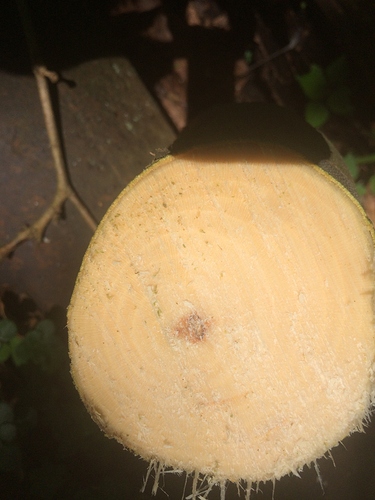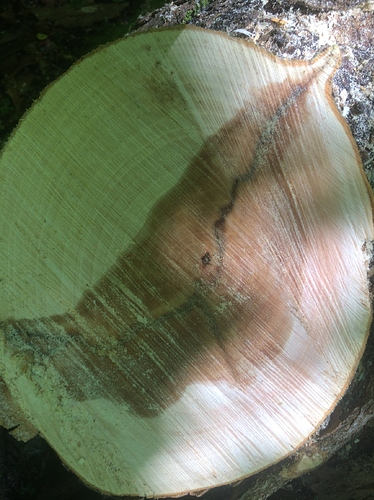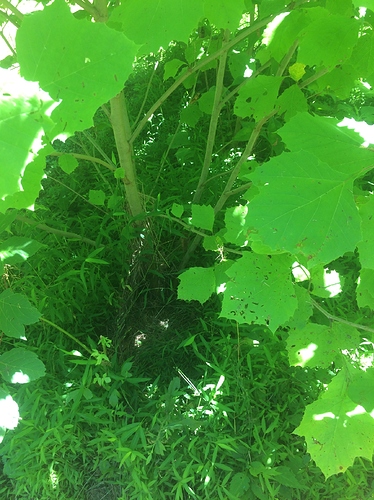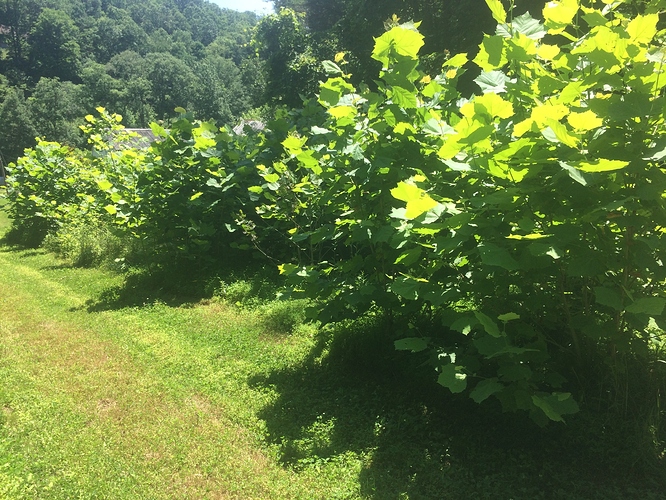Willow is not a problem. My wetland is full of it but the beavers have turned them into a short rotation copice; very permaculture of them. The first 20 or 30 ft feom the creek will be willow then transition to poplar. Probably a fence line to keep the beavers at bay. That is eventually for now I just need to get my canes in the ground for a nursery source. My understanding is willow has a higher ash content and outperforms poplar early in life but levels off. As far as lumber paint grade milled wood was often poplar around here. Its fallen out of favour with MDF available so cheap.
Plant enough of them. In enough varieties tried and: “Those trees: they, do grow!”
This is all a v-e-r-y local decision. Too many factors to internet-improve.
My primary wet flowing water bottom, and the three years ago Najaho Globe Willows I planted are all gone now due to late May’s killing frosts, and deer-chew.
The one variety of Ash I planted in this same wet bottom frost nipped back too. Yet all 30 of them have grown back every year. Were deer-chewed too. All 30 grew back every year. 'Nother 3-4 years they will be real ground drying trees. 15 years and be ground shading; weeds/grasses choking-out; soils improving; self-propagating trees.
Ash-wood for tool handles and such!!
The native Western red Cedars I planted in another wet spot. A hollow. After successive years of mouse bark chew are stunted bonsai’s. The native Red Alders I later inter-planted in this same area do frosts just fine. Deer chewed back early growth, and mid-winter, mighily. Both in these in my fartest away remote low-pocket spots suffer mightily the last few years in our six-weeks no-rain July-August seasonal drought.
I have 1500 feet hand carried and bucketed up a gallon or so a week to each to help out. Nothing native, or introduced wants to grow except bird introduced uncultured apples trees in these two winter soggy standing water sour-soils-spots.
Actually on-ground try. Re-try in different ways. Pursue what proves to work for you.
Gasifier fuel-wood . . . anything, and everything, does work. You design/operator adjust for different woods characteristics.
The importance is to have something that you can sustainably grow without depletion.
Depletion-using . . . then back to man-as-god, planet raping.
Shooo . . . ‘Ma Nature gonna’ kick your arrogant, brainiac ass. She WILL enforce a tick-tock populations crash on 'ya.
The beavers will gladly coppice the hybrid poplars too, they quite enjoy a good random gnaw. I would suggest trunk protection rather than a fence. Something like chicken wire loosely wrapped.
The paint grade lumber you refer to would be trembling aspen, an outstanding structural lumber.
I would agree with that where they are on the edge of my field they seem to like anything they can find to chew on. It does help keep the brush at bay but they also like to flood my field every few years we have to come to a new agreement…
“Self-Propagating”
Around here for gasifier useable trees these are mine:
Douglas Fir - a native, winds and critters cones/seeds spread
Western Hemlock - a native, winds and critters cones/seeds spread
Apples - non-native, birds fruits seeds spread
Hazel-nut - non-native, chipmunk and squirrels nuts spread. The ONLY one for me that from rootwads re-grow back, again and again. Hurrah!
Mountain Ash - non-native, birds bitter-berries spread
Holly - non-native, birds toxic berries spread.
Observe. Use what you got. Do not force the do-not-want-to-be’s. Observe: and strongly favor the do-wants-to-be’s.
S.U.
Here are some pictures of sycamores that were cut 3 years ago, bush hogged 2 years ago(last 2 pictures)they keep growing from the stumps. Next fall will be big enough to chunk. It is very dense for a fast growing tree.
If anyone wants sycamore seeds let me know, They are usually laying on the ground under the mature trees.
The sycamore looks like it grows like birch does from the stump, quite productive, much as Kristijan describes European hazel. Coppicing wood has apparently been done on some of the same stumps in Europe for 1,000 years. Eventually they form big rings.
I don’t want to come across as a jerk, but it seems I see 8 growth rings in the first pic…
That was a limb from an older tree, just to show what it looks like.
Ok, that makes good sense. It does look like excellent fuel wood, and perfect for gasifiers.
My dad used to call sycamore “button wood”. It was hard and tight grained and worked well before plastics were used.
Dad planted some of those frysville poplar back in the day. Black locust grows fast when it is young.
Mostly we have only yellow poplar. it will do the same but not as fast as what ya’ll are talking about.
Al, did you see Zacchaeus up in that tree before you cut it down? Every time I see a sycamore tree I think of some Bible school song when I was really young, maybe 3 or 4 about zacchaeus being a wee little man and having to climb up in the sycamore tree to see Jesus coming by. Always makes me laugh. We don’t have many of those trees around here. But I wish we did.
We have trees here in Michigan that are called poplar trees they are actually some kind of aspen . I call them quaking aspen.A lot of people tell me there no good to heat with; and call it gopher wood. Well I heated my house for over 18 years with it and it was all cut from a three and one half acre woods on the back of my place.I could continue to heat with it but I have gotten to old and sickly to be out there dropping trees. I bought wood last year for the first time.
Year by year for all of us sooner or later LarryO.
One neighbor extended his time by buying from the local need-beer-money boys all kinds of species of yards cleared rough cut rounds. Then into his 80’s would hand split/stack and re-cut some. Him, a former he-man timber feller, evolved down to using one of the first released small light-as-can-be made Stihl MS260Pro saw. Decades since his worked all day big 'ol McCullough’s. He actually passed away afternoon chair snoozing.
And my father-in-law into his early 80’s was l-o-n-g past when he could anymore even wheelbarrel his own wood into his house; still insisted I leave him the big knot not-splits in the wood shed. I’d birthday gifted him a Stilh plug-in electric saw. (he could not pull start his gas saws for years). Gave him the ability to still DO, smell wood that he’s cut.
Ha! I learned I had to upgrade that electric Stihl from the original lightweight 1/4" chain to a HD 3/8" chain and bar to keep those hard knots from breaking off the chain teeth! Electric saws have no gas-give forgiveness at shock.
Regards
season-by-season, too Steve Unruh
Steve thanks for the reply. I joined drive on wood with plans to build a truck.A lot of life has happened sense then. I’m only 76 years old but wound up with heart problems and c o p d . Can’t do much with out running out of breath.I bought wood from a friend so I am trying to keep heating the house with it. Sometimes it seams like I’m in one of those old keystone silent movies while trying to cut or stack wood with a air hose in my nose that goes to a tank off behind me someplace.
Also referred to as trembling aspen. Apparently in Cree or Ojibway they were called “woman’s tongue”, due to moving with the slightest impetus… ![]()
That one got a smile!
Oh, I like that one Garry. I have a friend in Georgia that likes to argue about what kind of trees these are , can;t wait to tell him what the Cree or Ojibway called them’
I now just help propagate the tree seeds that are in easy reach. Fun, cost is zero and easy. If they fail I still enjoyed being a member of the forest creatures.



